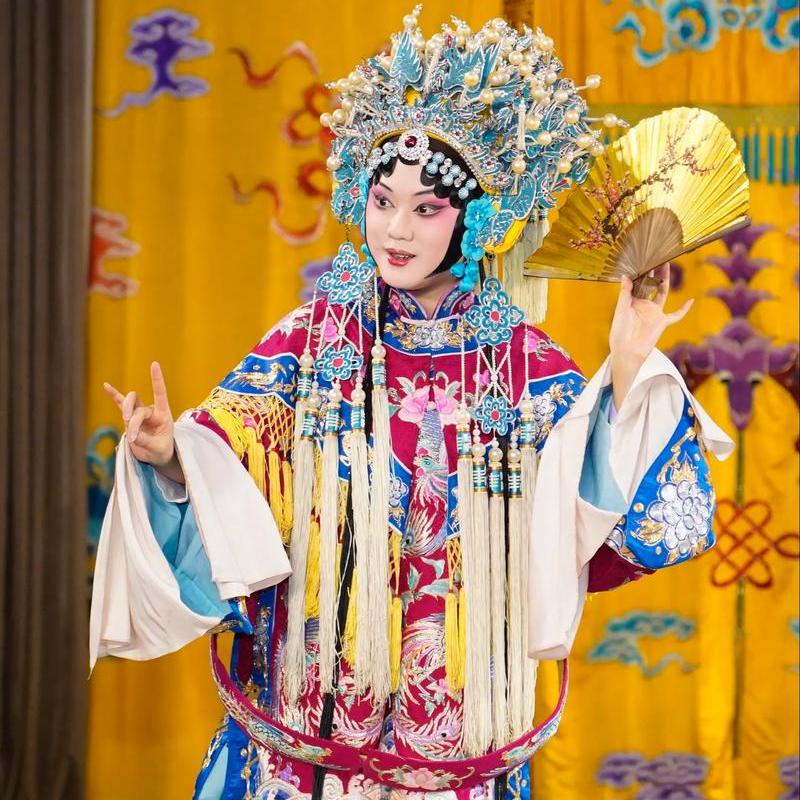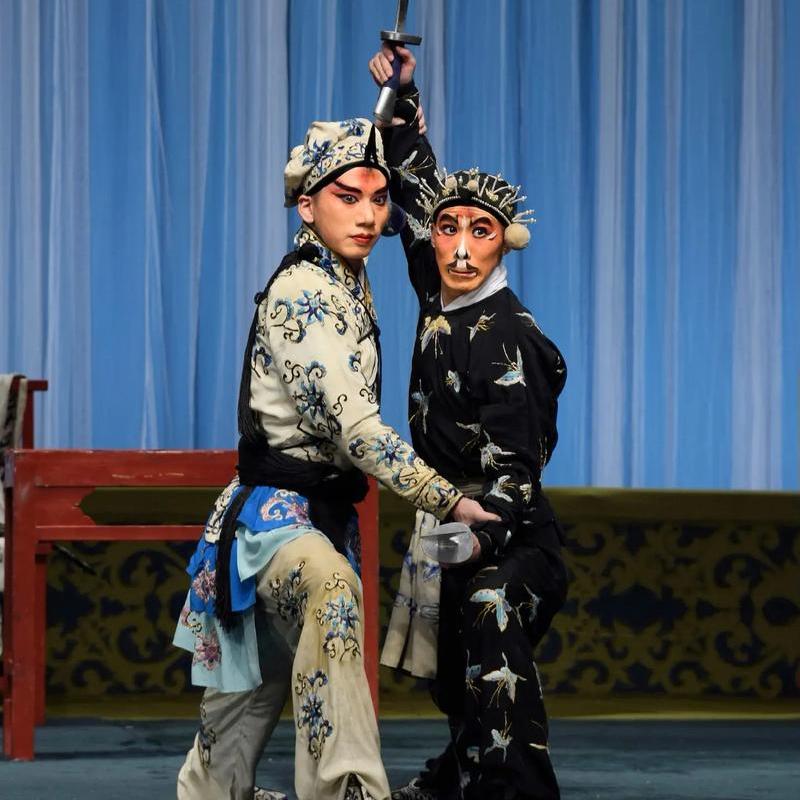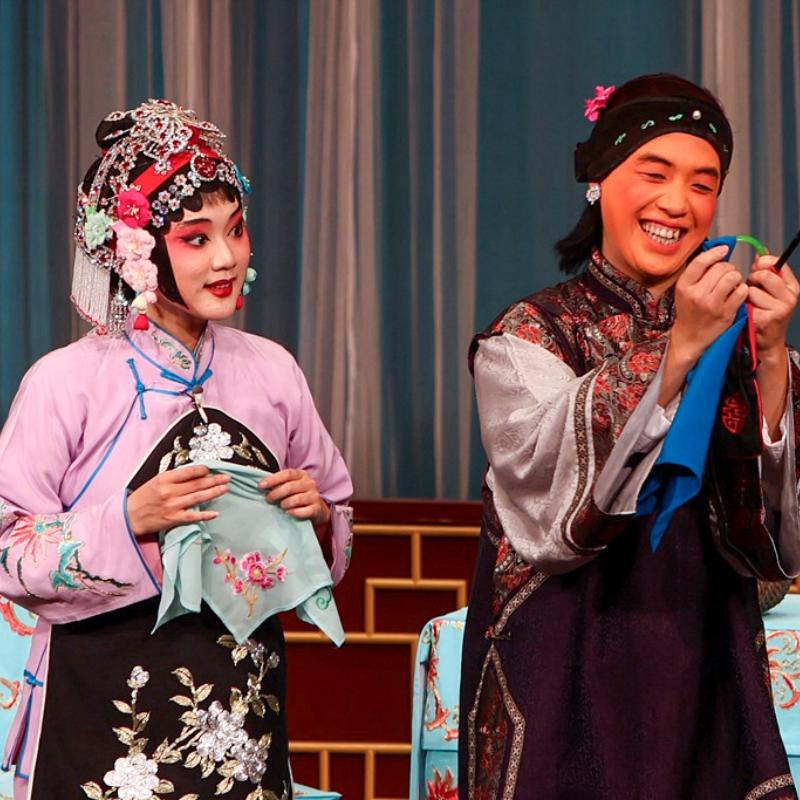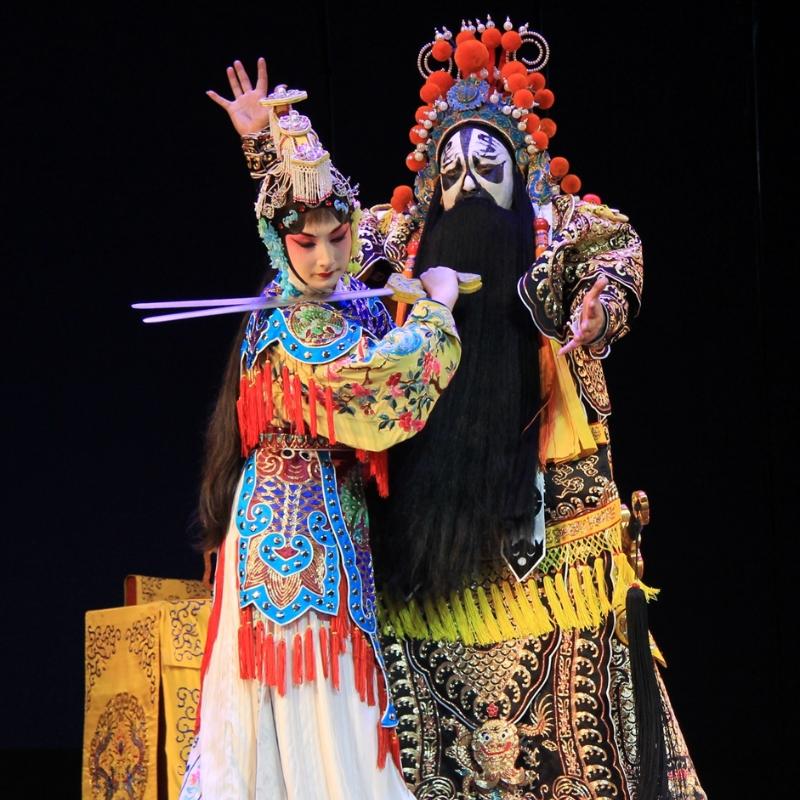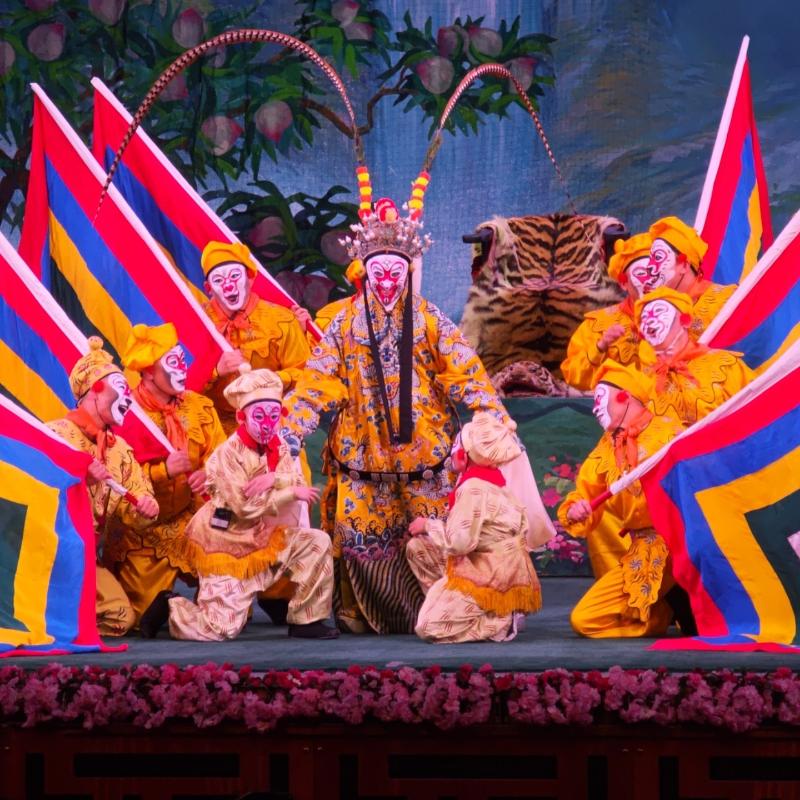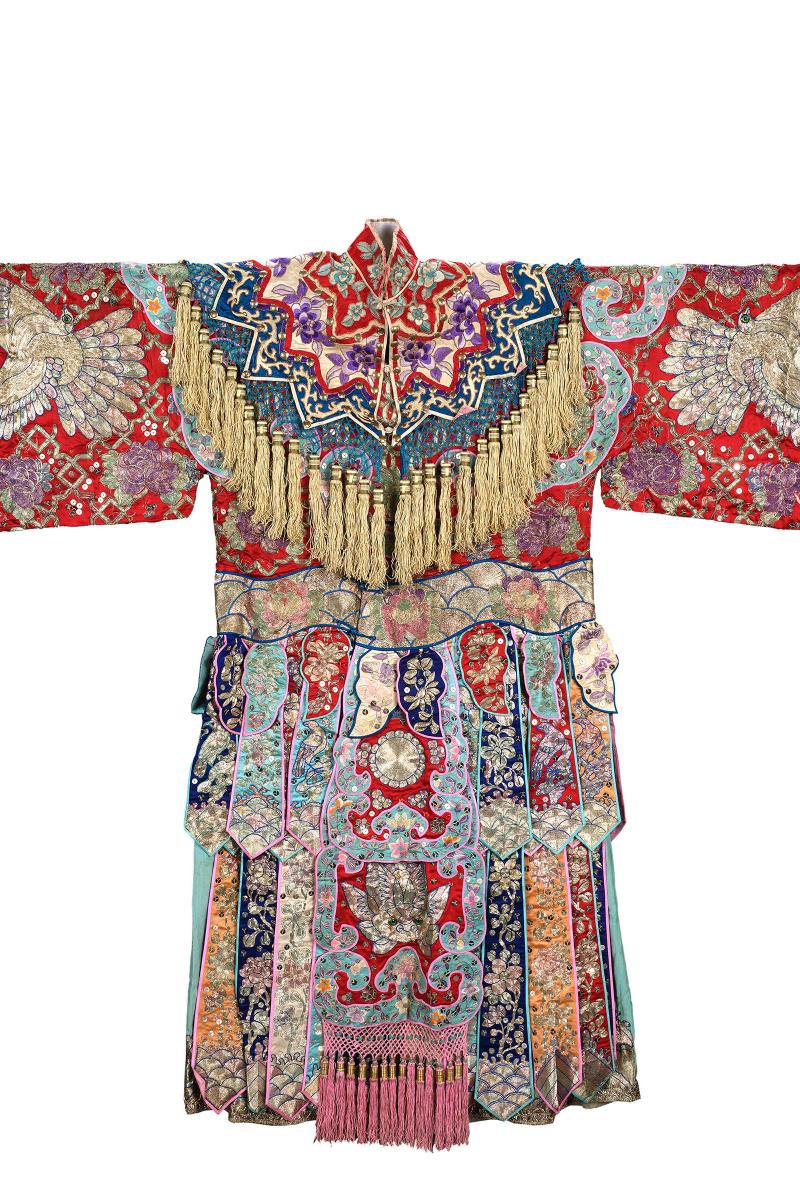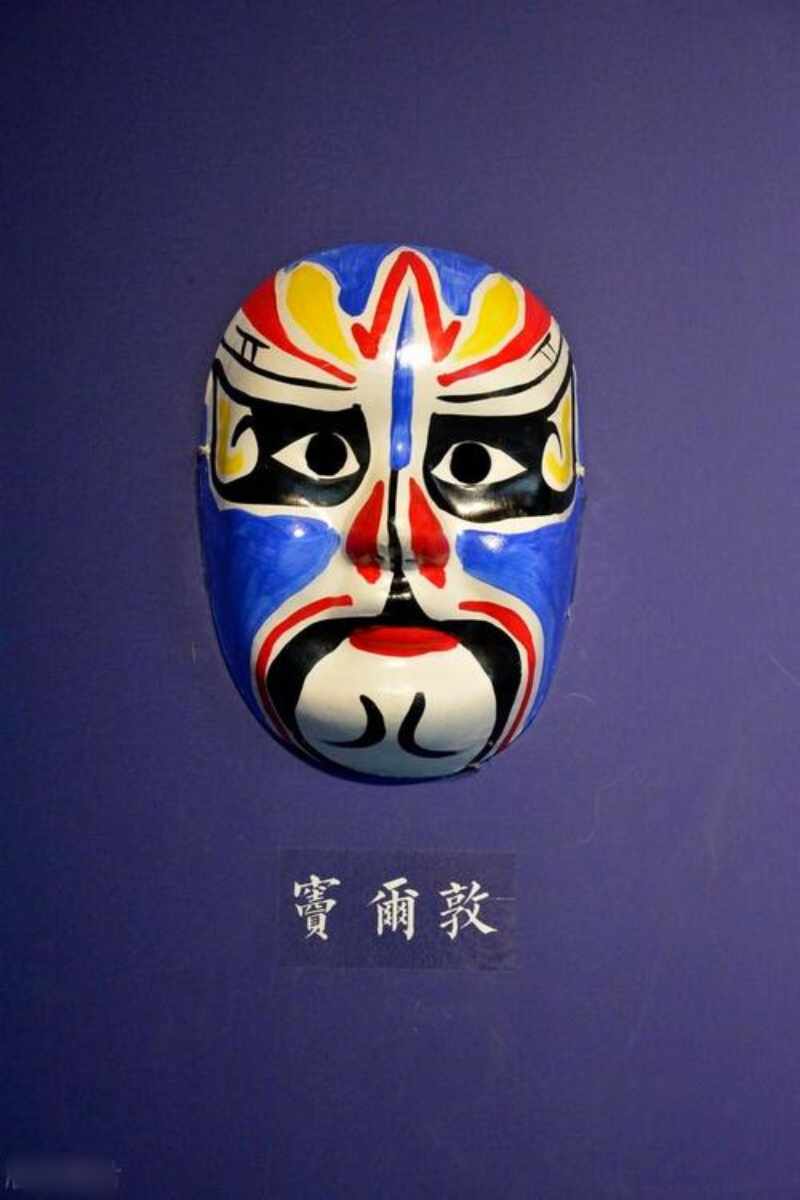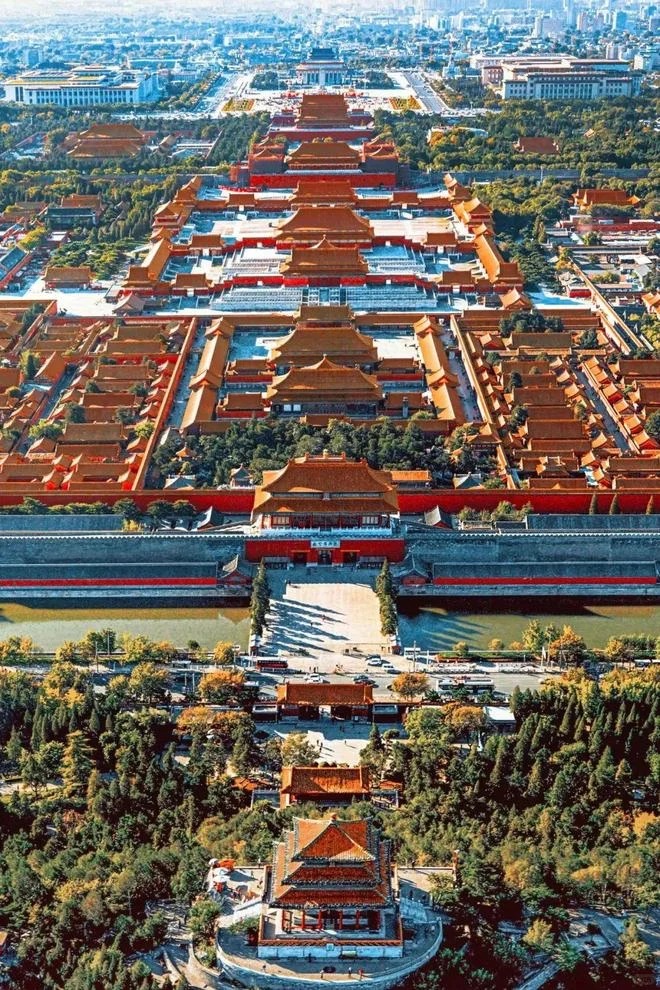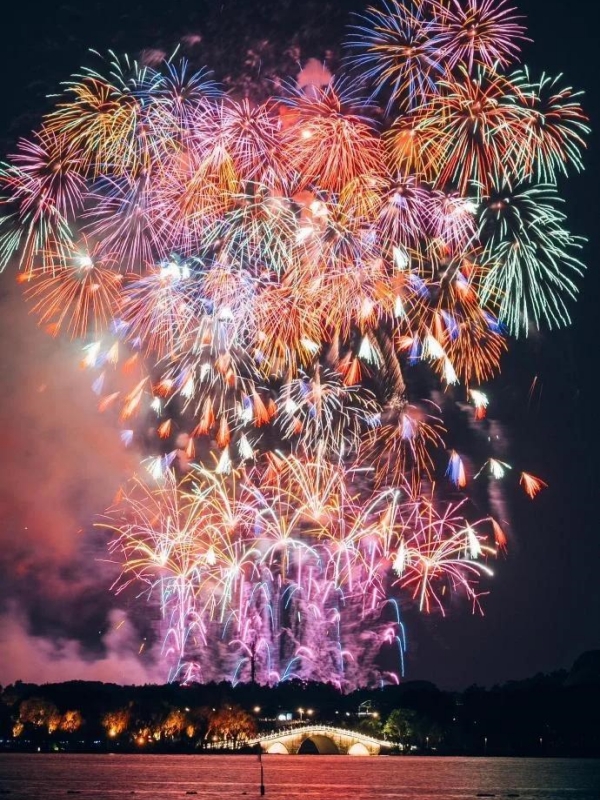Beijing Opera now serves as China's cultural envoy, acknowledged globally in places such as Paris, New York and London, not just Beijing. The sound of those words — china beijing opera — hints of mystery and wonder; even for non-speakers, people can feel invigorated just by the costumes and music and large, sweeping movements. Its portability and universal accessibility take it beyond a local art form; it is a window into Chinese history — and imagination. When you’re in Beijing, a live performance is more than entertainment — it’s your chance to experience centuries of tradition and learn how this art continues to thrive today. In the theater, the crash of gongs and the painted faces provide a frisson there is no letter or photo for and for that reason it's one of the most rewarding cultural experiences you will have.
Trace the History: Origins and Development
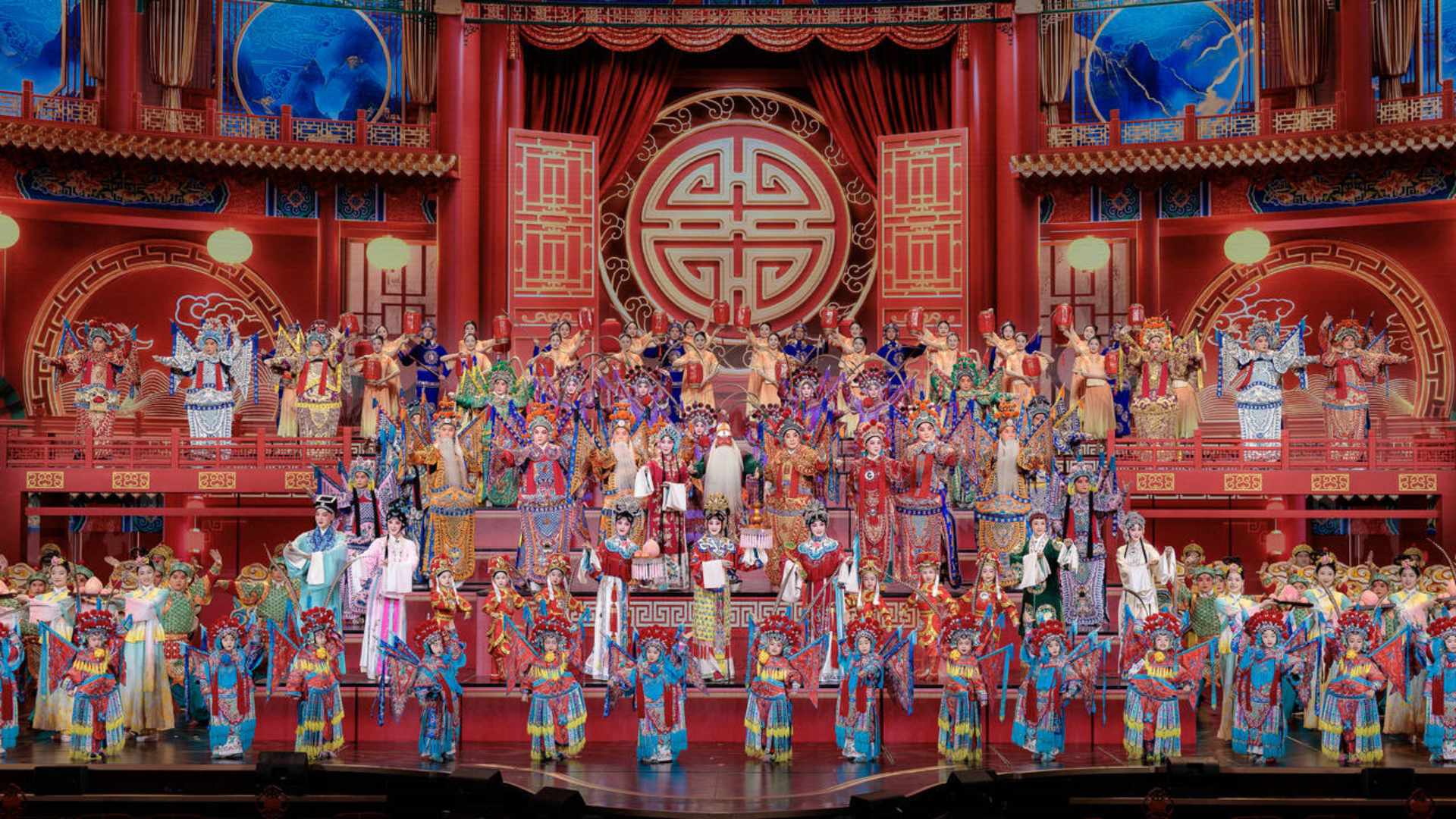
Beijing Opera Performance at the Spring Festival Gala
Origins
The China Beijing Opera didn't originate in Beijing. Under the rule of Emperor Qianlong, troupes from Anhui and Hubei journeyed to the capital, and over time their styles blended. The emperor liked it, the people loved it, and soon from palaces to teahouses theaters rang with performances.
For travelers, it’s worth remembering this synthesis arose from mobility and exchange, not isolation. The capital was a cultural magnet, so opera took in all sorts of influences before becoming the classical art.
Development
Beijing Opera was the national drama by the 19th century. Troupes were hired by elites for private shows; common folks would pay their coins to watch in guild halls. It went from local art to something spreading across the country.
This spread also flattened regional accents and styles into something Read more: How to Write a Speech Presentation for Public Speaking Brief The way emotions played out made them easier to follow regardless of where in the audience you were sitting. That accessibility is part of the reason it was able to become a national status symbol.
Modern Heritage
It was declared intangible cultural heritage of humanity by UNESCO in 2010. That may sound lofty, but it doesn’t mean it needs to be kept behind glass. It continues to pack them in at movie theaters here in Beijing — many are tourists with cameras around their necks.
Contemporary recognition comes with preservation and challenge both: That heritage tag protects the tradition, but it also forcing performers into innovation. Classics and experiments that attempt to keep the form alive for younger generations are also on view today for visitors.
Master the Skills: The Four Performance Elements
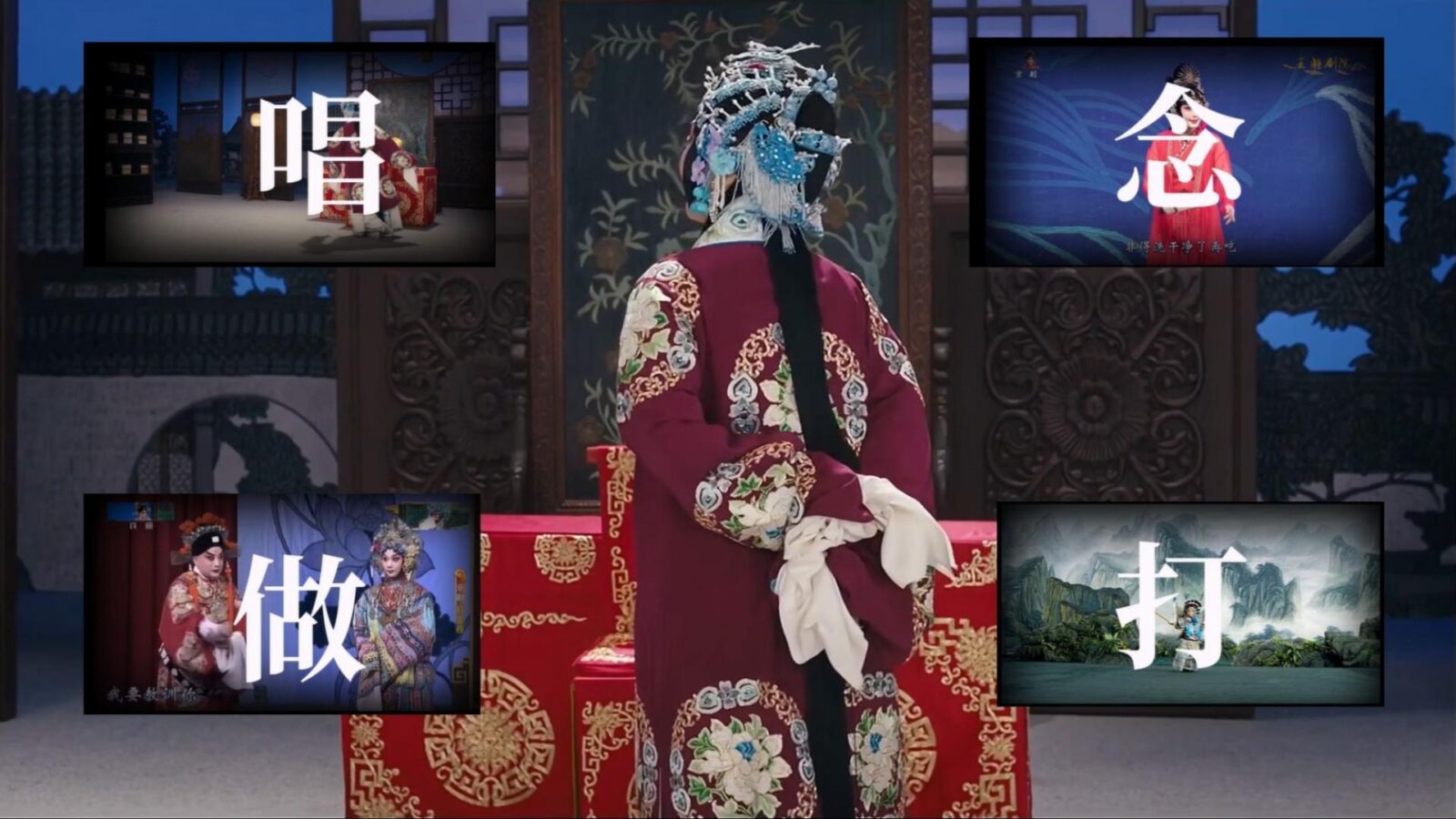
Performance Elements
Singing
It’s a carefully stylized, and not casually sung, vocal style. At first, it may seem pointed and high; but with an open mind, you hear rhythm and melody — in ways that recall jazz. Song transmits joy, rage and mourning on the spot.
For those new to the scene, that could be a lot of sound to handle. But once you get into the rhythm, you hear how every note is fraught with feeling and a clue about the character’s mental state. The singing is a story that says more than the words.
Smarter, more pragmatic travelers know that the second (or third or fourth) time around you often catch nuances to an aria that escaped you earlier. What seemed harsh the first time around can sound genuinely moving, particularly when combined with the physical gestures on stage. Repetition enables even foreign ears to pick up patterns and changes of mood.
Reciting
In China Beijing Opera, speech is chanted as much as spoken. You don’t even need to understand the language, just get the tone and feel the tension/tenderness/sarcasm. The rhythm is palpable, and also part of the show.
The cadence of reading is intentional, frequently slower than that in ordinary speech. This lets the person receiving your call to "listen between the lines" and do that translation in their head. It creates atmosphere with which to launch drama.
Visitors report that, even without translation, the rhythm lets them know who’s dominant and who’s storming around in intrigue. The music of language conveys beyond vocabulary so outsiders can sense the tension on stage.
Acting
Gestures replace scenery. An actor gets angry or moody with a turn of the sleeve. This is the simplest, most immediate and astonishing part for a first-time reader, in that absolutely nothing need be understood to feel it.
There’s code in every movement. Audiences catch on fast:circling can represent traveling, holding a whip equals riding a horse. Minimalism requires imagination and repays close watching.
The system can feel like hieroglyphics to foreign travelers. Eventually, you catch on, and the spareness is exhilarating — it’s amazing what you can see with so little shown. The less you see, the more your imagination fills in.
Fighting
Martial sequences entail acrobatics and fighting. Actors flip and spar, which merits applause. Stories such as Havoc in Heaven, for example, are great favourites with children because of their vibrancy and spectacle.
The choreography is strenuous — years of training are typically required. Stunts are practical, not illusions, so they’re viscerally compelling to witness from nearby. Sweat, falls and timing are all part of the reality.
For tourists, these battle scenes can be something of a cross between opera and martial arts movies. The enthusiasm is infectious and it helps keep younger viewers invested. It is also the most photographed and remembered by visitors.
Recognize the Roles: The Four Types

Role Types
Sheng (Male Roles)
From green academics to generals, these run the spectrum. Their diction is distinct, and they dance with good rhythmic strength. Actors spend years in training so that they may best achieve the difficult balance of grace, with a certain amount of hauteur, necessary to play sheng roles. A scholar’s posture is different from a general’s, and audiences perceive that in stance and voice.
Across the board, sheng roles serve as the Rosetta stone for foreign visitors, allowing everyone to follow along with complicated plots. When you can identify the scholar and warrior, the drama looks a lot straighter. The sheng part also teaches the virtue of patience. “They call it speaking lines, but really it is about developing a calm stage presence. Tourists frequently observe how the silence of a sheng can be just as potent as action.
Suchtravellers add, however, that sheng actors project a cultural ideal of will as well as way. This part, which demonstrates the degree to which Chinese theater appreciates refinement and authority in the same figure — as well as how it offers audiences a multi-tiered character to parse.
Dan (Female Roles)
Dan parts are also for maidens, nobilewomen and warriors. Once performed mostly by men; now largely by women. Flowing sleeves and sweet singing often draw the spotlight.
The dan role, while demanding a blend of grace and strength. Movements are supple and precise, the voice frequently conveying emotional depth that can cut across audiences. Dan performances are frequently perceived by travelers as visually stunning. The long sleeves, the subtle footwork, the emotive singing — it all makes them easier to follow even if you don’t understand a word of what’s being said.
For a lot of visitors, the brow-less dan roles show how subtlety is valued in Chinese performance. They are not just gorgeous, but layered with dignity and grief that have intercultural resonance. A dan role can seem to be watching poetry in motion.
Jing (Painted Face)
Notable for his striking face paint. Red stands for loyalty, white whispers treachery. Tourists soon are reading character in color. The jing actors are strong-voiced and dramatic. The heavy makeup is not mere ornament; it’s a code that audiences learn to decipher.
jingers, is jing. newcomers alike are struck by the visual impact of jing. The face paint offers a shortcut into the character’s soul, helping visitors distinguish between villains and heroes in an instant. A lot of foreigners like taking pictures of jing roles, since their color and pattern are very special. These photographs show the power and symbolism of Beijing Opera for memories that endure.
Tourists find jing roles interesting as well because they are the point of audacity. Booming voices and sturdy movement shatters the delicate sound of the opera at this point, reminding us that drama can also be forceful as well as subtle.
Chou (Clown)
The clown is identified by a white spot on his nose. They serve as the comic relief and have a lot of charm for fans. Chou actors will also ad lib little jokes providing laughter and creating a release of tension. Their pace is animated and their dialogue humorous.
Chou identities are popular with tourists because they’re easy to comprehend. Even without understanding the language, humor and physical comedy transcends cultural boundaries Perfect Dental Implant. Chou typically is the most digestible for kids and first-timers. They provide some relief between dramatic scenes and help balance the mood.
For plenty of families, the chou is the night’s shining star. The clown shows that Beijing Opera is not just serious and tragic, or beautiful and elegant, it is also jolly and unifying laughter.
Experience the Classics: Famous Beijing Opera Stories
Farewell My Concubine
Plot This is a tragic love story of King Xiang Yu and Bravura Maidens Consort Yu in Chu–Han contention period. With Xiang Yu cut off, surrounded by enemies and defeat imminent on the battlefield, Yu offers herself up to death in place of witnessing his capture. This is effective because of the synergy between gentle moves, mournful song and profound symbolism. For tourists (along with a few locals), it is one of the best windows into the emotional intensity that can accompany China Beijing Opera, marrying history and emotiveness in unforgettable form.
Havoc in Heaven
96 cidery war A story based on Journey to the West, a well known Chinese classic; The Monkey King Sun Wukong is invited to the celestial Peach Banquet only to find that he is excluded from the guest list. Enraged, he devours the peaches of immortality, filches the elixir and battles with heavenly soldiers, causing a commotion in heaven. And the opera is heavy on martial arts, acrobatics and color-coded costuming, which has made it a crowd pleaser. It’s one of the most entertaining shows to watch for families and younger visitors, mixing humor with exciting action.
The Crossroads
This is a story with lots of suspense and cunning staging. It is the story of two champions who misidentify each other as adversaries and battle to enblooded exhaustion within total darkness. The stage is nearly dark, and sound, choreography and timing are relied upon to make the battle comprehensible. The tension, as well as the creativity, results in a classic production which continues to draw enthusiastic audiences of locals and visitors alike. It illustrates Beijing Opera’s capacity to do more with less in the way of stage effects.
Picking the Jade Bracelet
A subtle, poetic romantic play, featuring the young scholar Fu Ming and the maiden Sun Yujiao. Fu Ming purposely loses a jade bracelet to express his love, and Sun Yujiao picks up the jade as evidence of love. The narrative features old-fashioned courting rituals and the beauty of small gestures. For visitors, this play is just another example of the softer, more intimate side of Beijing Opera compared to its louder and more martial productions.
The Drunken Beauty
This is a famous one with Yang Guifei, famed concubine of Tang Dynasty Emperor Xuanzong. Invited to a garden party, she pines for the emperor, who never comes because he’s off seeing another consort. Bereft and shamed, Yang Guifei drinks heavily and sings her heart out in a solo number that requires aplomb. The costumes are beautiful, the music is stirring and it’s one of the most deeply emotional work for someone seeing it for the first time.
After a night of Peking Opera, are you curious what else the city offers? Start with Things to Do in Beijing at Night: Food, Lights, and Hidden Gems (2025 Guide)
Appreciate the Sound: Music and Instruments
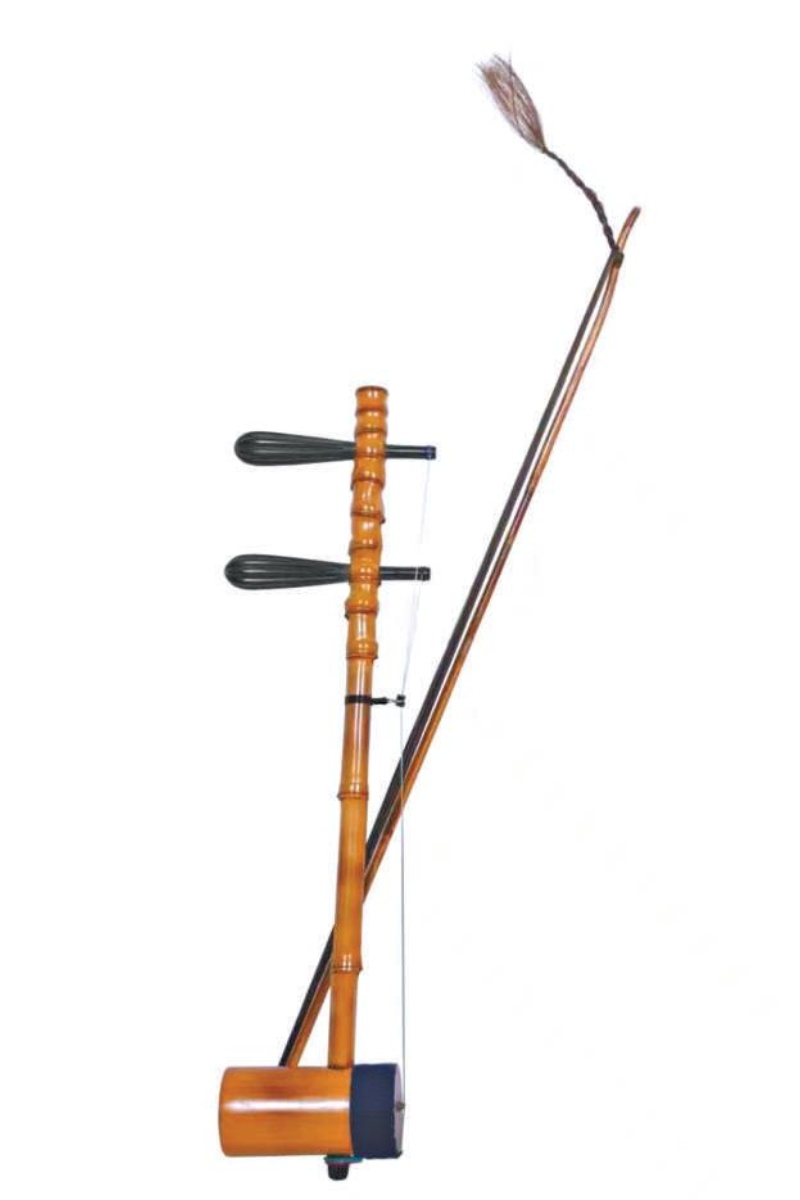
jinghu
Vocal Styles
There are two main styles in evidence: The bright and lively xipi, the somber and deep erhuang. One is a conversation, the other a monologue. These two modes basically make up every aria and create a kind of contrast people are instantly familiar with. For many foreign visitors, this contrast is the first toe in the water for getting a feel of China Beijing Opera’s rhythm, because it breaks down music into easy-to-grasp emotions.
For fresh ears, xipi seems playful, quick and sharp. Erhuang is slower and more ponderous, a sigh made into music. Presented next to one another, they are an education for tourists in how a performance constructs mood. Each style has its function, one generating energy and motion, the other pausing to allow emotion to settle. Is a touch of watching this change can come closer to the end of the evening feel more or balanced.
Many even point out that after a bit of repetition, these styles are easier to recognize and anticipate. It’s kind of like learning basic chords in Western music; you start to predict where the drama is headed and are able to enjoy the performance that much more. And in time, visitors start humming tiny pieces of it — evidence that the sound has permanently lodged itself in some memory or other and now exists as a vague cultural memento.
Instruments
The piercing yet expressive tone of the two-string fiddle jinghu leads. Percussion — gongs and drums — maintains the rhythm and erotic vibration. Without the presence of these instruments in situ, the opera would lose its pulse. They are the base, and they determine tempo and mood in ways that the actors and audiences are moved by.
The sound can be shocking for a foreign audience. Despite its small size, the jinghu is very powerful and can be heard in a large hall. The drums and gongs play a role scarcely different from that of the narrators, as if signaling changes in action or emotion. When you see these cues, you realize that they are no longer background players but storytellers directing the rhythm of the night.
Tourists tend to spend as much time watching the musicians as the actors. The graphic energy of the musician pounding on a jinghu or the intense grimace of the percussionist bring another layer to this theater. Seeing this happen live benefits from making the audience aware of the teamwork that goes into pulling off the spectacle, and lets them understand that at all times opera is both music and theater.
Savor the Aesthetics: Unique Features of Beijing Opera
- Beijing Opera costumes
- Dou Erdun’s face mask
Costumes and Masks
Rich costumes, embroidered robes and fancy dresses glitter by stage lights that may overwhelm the public. Each piece of clothing is meticulously handmade, and the designs can communicate rank, role and even mood of a character. Painted faces provide an overlay, with symbolism to say that this person is loyal or this one brave or that one deceitful.
To many audience members, the vividness and brashness of the costumes alone captures their attention from China Beijing Opera. They let newcomers follow the story without having to know every word; because colors and shapes serve as visual shorthand. To watch a stage filled with shimmering silks is to walk into a living painting.
Tourists frequently have remarked that the costumes are so tempting to photograph, yet generally not allowed during a performance. The patterns and the masks however, are remembered well, and most of them buy these little replica decorative masks for memorabilia’s sake.
Stage Movement
There’s no elaborate scenery cluttering the stage. A table and a pair of chairs can be made to serve as palace or battlefield, and the imagination supplies the rest. Each step, each turn and each gesture is exact and resonant with purpose – the product of centuries of codified rules.
This minimalism can be surprising for first-time viewers. In Western theater, the sets are frequently expansive like those out there but here it’s up to the actors themselves to bring the environment into life around them. A character walking in a circle can imply a trek, and one hop can indicate going over a mountain.
Travellers who look closely soon discover that this abstract system is a source of creative strength. The absence of scenery gives the performance no boundaries, allowing you to get actively involved and fill in gaps with your own imagination.
Where to Watch China Beijing Opera in Beijing

Huguang Guild Hall
National Centre for the Performing Arts
This contemporary space, also known as the “Giant Egg” thanks to its dramatic dome design, is at 2 West Chang’an Avenue, just off Tiananmen Square. It is legendary for its world-class acoustics, comfortable seating and helpful English subtitles that run on side screens. Tickets typically cost 200 to 480 RMB, depending on seating; the best views afford a close look at the costumes and makeup. Travelers suggest booking online weeks in advance on platforms like Ctrip to ensure they don’t miss out at the last minute.
Chang’an Grand Theater
This theater is located along East Chang’an Avenue, in close proximity to the busy Wangfujing shopping street, and convenient for tourists. It is beginner-friendly for another reason: its programs, the better to introduce the curious and unsure, often come with shorter items known as zhezixi, allowing newcomers a taste of different styles all in one evening. Tickets are 100-300 RMB and it’s hassle-free to book these through online sites like Klook. Many visitors finding the welcoming staff and frequent subtitles help the first experience of China Beijing Opera a less daunting one.
Huguang Guild Hall
This historic spot, situated in a traditional wooden building that hails back to the Qing dynasty and tucked into 3 Hufang Road, Xicheng District, still serves up an intimate environment. Tickets generally cost between 80–200 RMB, making it much cheaper than the vast modern theaters. The lighting is rudimentary, but audiences appreciate the proximity to performers and the old-world charm. It is best to buy tickets at the official counter or via Ctrip for fair pricing and a reserved seat.
Tips for Tourists to Watch China Beijing Opera
Booking Advice
On holidays like National Day or Spring Festival, tickets are snapped up quickly, often weeks before the show. It is wise to try to book at least a week ahead of time via reputable apps like Ctrip, Klook or Damai, all of which offer seat maps and instant confirmation. Using official apps also guards against scalpers, who tend to charge inflated prices. For travelers who do not have a Chinese bank card, international credit cards are accepted on these platforms to make the process simpler.
Language Help
Some theaters offer English subtitles, typically on small screens mounted near the stage, but they can be imprecisely translated. Visitors frequently rely on a selection of translation apps, like Pleco and Google Translate, to pick up key words or grasp program details, and some are known to near-fluently follow audio guides through small Bluetooth earphones. Visitors who have time to plan can verify whether subtitles are offered that night by checking the theater’s official website or app.
Show Selection
On your first visit, don’t opt for the full three hours of an China beijing opera; it can be a lot to take in. Shorter excerpts, known as zhezixi, are more varied and easier to follow. Travelers can buy tickets to these shows through Trip. com, Ctrip or the venue’s own app even as reviews often help to reveal exactly which bits are most accessible for novices. Opting for this tour will offer visitors a concentrated yet abundant impression of China Beijing Opera without being drowsy.
FAQs about China Beijing Opera for Travellers
Q: What‚s the difference between China Beijing Opera and that of Western theater?
A: It’s an art form that fuses singing, reciting, acting and martial arts together as a full-formed art form. Instead of depending on big bulky stage settings, it deftly employs symbolic gestures, minimal props and stylized movement to create entire worlds on the empty floor or a few chairs. This combination doesn’t ring as Western theater because it emphasizes imagination rather than realism, requiring that audiences lean in.
Q: Do you need to know Chinese to appreciate a performance?
A: No, it is not required. Subtitles are frequently flashed onto side screens, and although it is a wordless experience for non-Chinese speakers, body language fills in a lot of the blanks. Many foreigners say they did enjoy the rhythm, costumes and gestures even when unable to understand every word. The force of the performance transcends any language barriers, while still enabling travelers to experience its core without fluency.
Q: What iconic games or stories should first-time visitors watch?
A: Farewell My Concubine is tragic and moving, Havoc in Heaven full of action, and The Drunken Beauty is most emotional and elegant. These plays are more often produced, and they're more accessible to beginner audiences. Selecting them ensures that audiences glimpse the opera’s diverse strengths, across music, movement and storytelling.
Q: How long does the performance last, and should I make dinner plans after?
A: Excerpts tend to go for about an hour; whole plays can be performed over three hours. Visitors should also be prepared to spend the evening, if they are attending a full opera, and allot time for traveling between the venue and other parts of the city. Snacks and rest stops are scarce, so it’s best to eat before going on the tour and prepare for a deeply cultural experience.
Q: Is it good for kids/families?
A: Yeah, lively martial plays, especially things that are full of action, comedy. Children frequently love the colorful costumes and energetic fight scenes. Parents should steer clear of long tragedies for younger children, who might lose interest, but shorted excerpt shows are good options and family friendly.
Q: Can foreigners learn to perform Beijing Opera?
A: Yes, there are a few cultural centers in Beijing that provide limited workshops. Visitors can be taught basic movements of the sleeves, facial expressions, or even make a traditional mask as an adoptive souvenir. Some of these programs offer the chance to get in costume and try things out, providing tourists with a playful, memorable way to engage with the art beyond sitting out in the audience.
